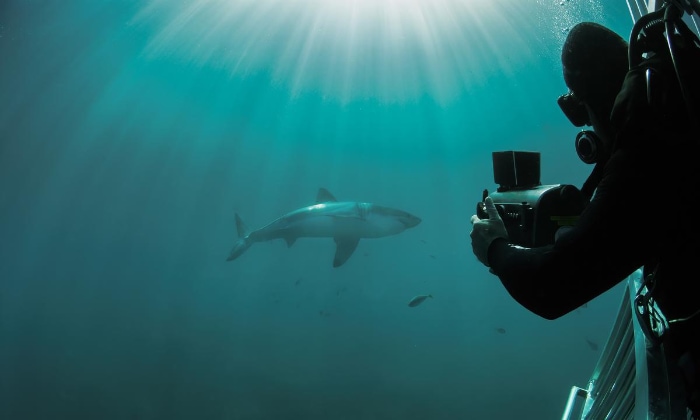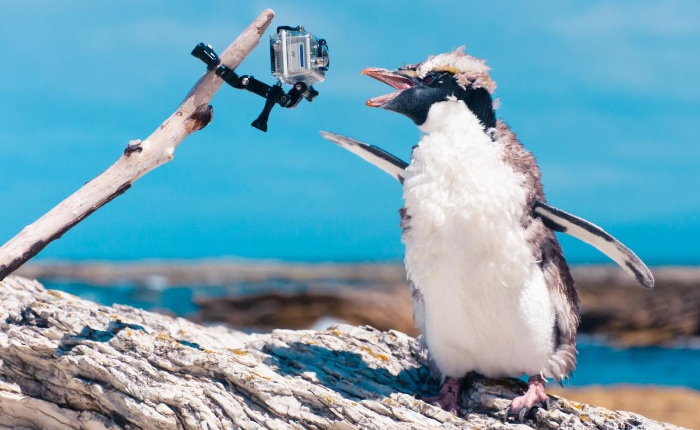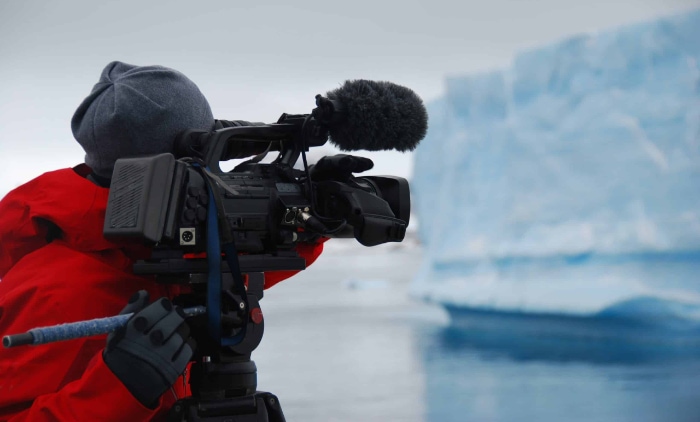How Wildlife Documentaries Are Filmed: The Untold Story

Capturing the elegance of a gazelle in full stride or the majestic flight of an eagle against a pristine sky—these are moments that make wildlife documentaries a riveting watch. Yet, have you ever wondered about the intricate planning, specialized equipment, and unique skill sets that go into creating these spellbinding visual narratives?
Far from mere cinematic ventures, wildlife documentaries serve a broader purpose. They educate audiences, inspire conservation efforts, and offer an unparalleled window into ecosystems we might not otherwise explore.
Pre-Production Planning
Before a camera even begins rolling, a considerable amount of groundwork must be laid. This is the phase where filmmakers invest time in research, scouting locations, and securing necessary permissions.
In the world of wildlife documentaries, neglecting pre-production planning can result in wasted resources and missed opportunities.
Importance of Research and Scouting
Extensive research is critical in this initial stage. The focus here is on understanding the specific animal behavior, migration patterns, and the natural setting where the filming will take place.
Information gleaned from scientific literature, conversations with experts, and preliminary site visits guide the planning process. A well-researched plan ensures that filmmakers are in the right place at the right time to capture stunning, natural footage.
Securing Permissions and Ethical Considerations
Filming in natural habitats often requires permits and permissions from local wildlife authorities or government bodies. This is not merely a legal formality but also an ethical obligation to ensure the filming activities have minimal impact on the environment and its inhabitants.
Failure to obtain these permissions can result in hefty fines, legal action, and a tarnished reputation.
Team Briefing and Coordination
Once research and permissions are in place, it’s time to brief the team. Everyone from the director and cinematographer to the sound engineer and local guides needs to be on the same page.
Coordination at this stage sets the tone for the entire project, ensuring that all team members understand their roles, the challenges they might face, and the ethical standards they are expected to uphold.
Budget and Logistics
The cost of making a wildlife documentary can vary dramatically depending on the scope of the project. Budget considerations dictate the type of equipment to be used, the duration of the shoot, and even the number of crew members involved.
Alongside this, logistical elements like transportation, accommodation, and the shipping of equipment must be meticulously planned to prevent any hiccups during the filming process.
Finalizing the Shooting Schedule
The last step in pre-production planning is to finalize the shooting schedule. This involves assigning specific dates and times for different shooting activities based on animal behavior patterns and seasonal changes in the environment.
A well-structured schedule not only makes optimum use of resources but also increases the chances of capturing compelling footage.
The Team Behind the Scenes
Crafting a wildlife documentary is a collaborative endeavor that brings together professionals from various disciplines. Each member brings specialized skills and expertise to the table.
Without this synergy, capturing the awe-inspiring moments that make wildlife documentaries so captivating would be nearly impossible.
Roles and Responsibilities
A typical wildlife documentary team comprises several key roles. The director is the creative leader who ensures the project adheres to its vision.
Cinematographers capture the visual elements, while sound engineers are responsible for recording natural sounds and ambient noise. Researchers and scriptwriters provide the necessary context and narration that ties the visuals together into a coherent story.
Specialization in Wildlife Filmmaking
It’s worth noting that the professionals involved often have specializations within the realm of wildlife filmmaking. For example, some cinematographers may be experts in underwater photography, while others excel in aerial shots using drones.
Similarly, certain sound engineers might specialize in recording in dense forests, whereas others have expertise in capturing the sounds of the ocean.
The Importance of Local Guides and Wildlife Experts
A crucial yet often overlooked part of the team is the local guides and wildlife experts. These individuals possess invaluable knowledge about the local terrain and animal behavior, serving as the eyes and ears of the team on the ground.
Their insights can be the difference between capturing a rare moment and missing it entirely.
Adaptability and Team Coordination
Adaptability is a key trait that every team member must possess. Nature is unpredictable, and plans can change in an instant.
It is vital for the team to coordinate efficiently and adapt to changes, whether it’s an unexpected animal sighting or sudden weather changes. Clear communication and quick decision-making are essential in these instances.
Training and Safety Measures
Given that wildlife filmmaking often takes place in remote or potentially dangerous locations, safety is a paramount concern. Team members usually undergo rigorous safety training that covers first aid, survival skills, and emergency protocols.
This ensures that even in the face of unforeseen challenges, the team is prepared to handle the situation with minimal risk.
Equipment Used

High-quality equipment is the backbone of any successful wildlife documentary. From the cameras that capture crisp images to the microphones that record clear sounds, the gear must be reliable, durable, and capable of performing under a variety of conditions.
Types of Cameras and Their Advantages
Wildlife documentaries often employ a range of cameras to capture different aspects of animal life and natural landscapes. 4K cameras are a staple for capturing detailed and vibrant footage.
For expansive aerial shots or surveying large areas, drones equipped with high-resolution cameras are commonly used. Underwater cameras come into play for documenting marine life.
Each type of camera serves a unique purpose and offers specific advantages, such as the ability to capture slow-motion or time-lapse footage.
Sound Equipment Essentials
Equally critical is the sound equipment, as natural soundscapes are an integral part of wildlife documentaries. Shotgun microphones can capture directional sound, isolating specific noises like animal calls.
Boom poles help position microphones to pick up ambient sounds without the interference of crew movements. Windshields or ‘blimps’ are used to protect the microphone from wind noise, which can ruin an otherwise perfect recording.
Supporting Accessories and Gear
In addition to cameras and sound equipment, various accessories are required for a successful shoot. Tripods and stabilizers ensure that the cameras are steady, especially important when shooting from a distance using long lenses.
Lens filters can be used to adjust for different lighting conditions, and extra batteries and memory cards are essential to avoid interruptions during shooting.
Remote Control and Automated Systems
With advancements in technology, remote-controlled cameras and automated systems are becoming increasingly popular. These devices allow filmmakers to capture footage without physically being in the location, reducing human interference with wildlife.
These systems can be set up in advance and controlled remotely, providing new perspectives that were previously difficult to achieve.
Considerations for Extreme Conditions
Filming wildlife often takes place in extreme conditions, be it sweltering deserts or freezing polar regions. Specialized equipment, like waterproof housings for underwater shooting or insulated cases for cold environments, are necessary to protect the gear and ensure its proper functioning.
Filming Techniques
Once the team is in place and the equipment is set up, the actual process of capturing footage begins. However, filming wildlife is not as straightforward as simply pointing a camera at a subject.
Various filming techniques, often tailored to the specific behaviors and habitats of the animals involved, are employed to obtain the most natural and compelling footage.
Hide and Seek Approach
One of the most commonly used techniques is what can be termed the “Hide and Seek” approach, where filmmakers use blinds or camouflaged hides to conceal themselves from the animals. This allows them to get closer to wildlife without causing distress or altering natural behaviors.
The primary aim here is to capture footage that is as unintrusive as possible.
Remote Controlled Cameras
In environments where human presence is disruptive or dangerous, remote-controlled cameras offer a viable alternative. These cameras can be placed in strategic locations ahead of time and operated from a safe distance.
This technology is especially useful for capturing rare or dangerous animals in their natural habitat.
The Art of Baiting
While more controversial, baiting is sometimes used to attract specific animals into the frame. It involves using food or other lures to entice the animal.
However, this technique is subject to ethical guidelines to ensure it does not harm the animal or significantly alter its natural behavior. In many cases, baiting is avoided or minimized to maintain the authenticity of the footage.
Aerial and Underwater Filming
The use of drones for aerial filming and specialized underwater cameras for marine environments adds an extra dimension to wildlife documentaries. Aerial shots provide a bird’s-eye view of landscapes and animal migrations, while underwater cameras offer a glimpse into a world that is often out of reach.
Both techniques require specialized skills and equipment to execute successfully.
Ethical Considerations in Filming Techniques
Regardless of the method used, ethical considerations are paramount. Filmmakers must ensure that their activities do not distress or endanger animals or their habitats.
Approaches like using long lenses to capture animals from a distance or filming during times when animals are less active are examples of how ethical concerns shape filming techniques.
Challenges and Adaptations

Even with meticulous planning and cutting-edge equipment, wildlife documentary filmmaking is fraught with challenges. These obstacles range from environmental conditions and unpredictable animal behavior to technical issues.
How filmmakers adapt to these challenges often makes the difference between a successful shoot and a missed opportunity.
Environmental Factors
The natural world is a dynamic and often unpredictable setting. Filmmakers may contend with rapidly changing weather, difficult terrains, and other environmental factors that can hinder the shooting process.
Adapting to these conditions often requires quick thinking and improvisation, such as modifying shooting angles or changing locations altogether.
Unpredictable Animal Behavior
The subjects of wildlife documentaries—animals—are inherently unpredictable. Despite the most in-depth research and planning, animals don’t follow a script.
Filmmakers must be patient and ready to adapt their plans on the fly, sometimes waiting days or even weeks to capture a few moments of relevant footage.
Technical Limitations
High-quality recording equipment is generally more sensitive and may have limitations, especially in extreme conditions. Cameras may fog up in humid environments, batteries can drain quickly in cold temperatures, and lenses might get dirty in windy or dusty areas.
Overcoming these technical challenges requires backup equipment, regular maintenance, and sometimes innovative makeshift solutions on site.
Safety Concerns
Both crew members and animals must be kept safe during the filming process. Safety measures often limit how close filmmakers can get to potentially dangerous animals, affecting the types of shots they can achieve.
Implementing safety protocols without compromising the quality of the documentary is a fine line to walk.
Legal and Ethical Constraints
Besides the necessary permits and permissions, filmmakers may face unexpected legal challenges. Land ownership disputes, new regulations, or even political instability in the filming location can halt or disrupt the production.
Ethical considerations, particularly concerning animal welfare and environmental impact, may also impose restrictions on filming activities.
Post-production
The filming stage is only part of the equation in creating a wildlife documentary. Once the footage is captured, it moves into the post-production phase.
This is where raw footage transforms into a polished, compelling narrative. Post-production involves several key steps, each crucial in shaping the final product.
Editing and Sequencing
The initial task is sorting through hours, sometimes hundreds of hours, of raw footage to select the best shots. Editors then sequence these clips to form a coherent narrative, taking into account the pacing, visual transitions, and story arcs.
This is a meticulous process, often requiring multiple iterations to achieve the desired flow and impact.
Sound Design and Mixing
Sound plays a vital role in enhancing the visuals and providing a fully immersive experience. Sound designers work on balancing the natural sounds captured during filming with narrations, music, or additional sound effects.
This process, known as sound mixing, helps to fine-tune the audio elements to complement the visuals seamlessly.
Color Grading and Special Effects
Visual aesthetics are further refined through color grading. This step adjusts the contrast, saturation, and hues to give the footage a particular look or mood.
At this stage, any required special effects are also added. However, these are typically minimal in wildlife documentaries to maintain authenticity.
Narration and Voice-over
Many wildlife documentaries include narration to provide context and additional information. Voice-over artists or experts in the field usually record these narrations.
The script is carefully timed to match the edited visuals, and the voice-over is integrated into the sound mix.
Quality Assurance and Final Checks
Before the documentary is ready for release, it undergoes a series of quality checks. This involves scrutinizing the film for any technical glitches, inconsistencies, or errors that may have been overlooked.
Additional screenings might be conducted for a select audience to gather feedback, leading to possible further refinements.
Conclusion
Crafting a wildlife documentary is a complex, multifaceted endeavor that demands meticulous planning, specialized equipment, skillful filming techniques, and a focused post-production process. From the pre-production stage to the final edits, each step presents its own set of challenges and opportunities.
Filmmakers must not only possess technical expertise but also demonstrate a profound respect for the natural world and its inhabitants. Ethical considerations, legal constraints, and safety measures add additional layers of complexity to this already demanding field.
However, when executed successfully, the outcome is not just visually stunning but also serves as a powerful tool for education and conservation. Therefore, the creation of a wildlife documentary is as much an exercise in storytelling as it is a scientific and artistic endeavor.


